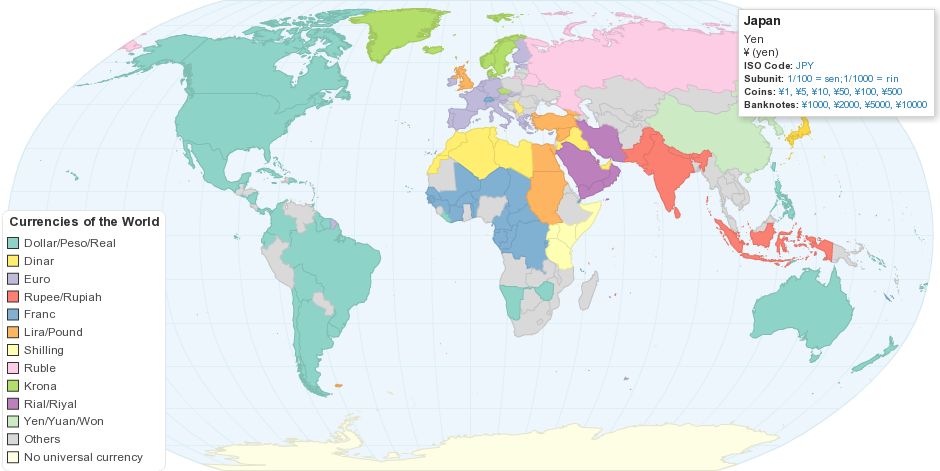This map shows all the currencies of the world.
In economics, currency refers to physical objects generally accepted as a medium of exchange. These are usually the coins and banknotes of a particular government, which comprise the physical aspects of a nation's money supply.(Wikipedia 2011)
Currency Symbol: Symbol is used in everyday life to denote that a number is a monetary value, such as the dollar sign "$", the Pound sign "£", and the Euro sign "€".
ISO 4217 CODE: This is a three-character currency codes used to represent them. ISO 4217 was created by ISO (International Organization for Standardization — is a worldwide federation of national standards bodies.) In most cases, the currency code is composed of the country's two-character Internet country code plus an extra character to denote the currency unit. For example, the code for Australian Dollars is simply Australia's two-character Internet code ("AU") plus a one-character currency designator ("D").
Subunit: In a currency, there is usually a main unit (base), and a subunit that is a fraction of the main unit. In some countries, there are multiple levels of subunits. For eg: China - 1/10 = jiǎo (角); 1/100 = fēn (分).
Coins: A coin is a piece of hard material that is standardized in weight, usually in the shape of a disc, and most often issued by a government. Coins are used as a form of money in transactions of various kinds. Coins made for paying bills and general monetized use are usually used for lower-valued units, and banknotes for the higher values.
Banknotes: A banknote (often known as paper money or simply a note) made by a bank payable to the bearer on demand, used as money, and in many jurisdictions is legal tender.
15 years ago

